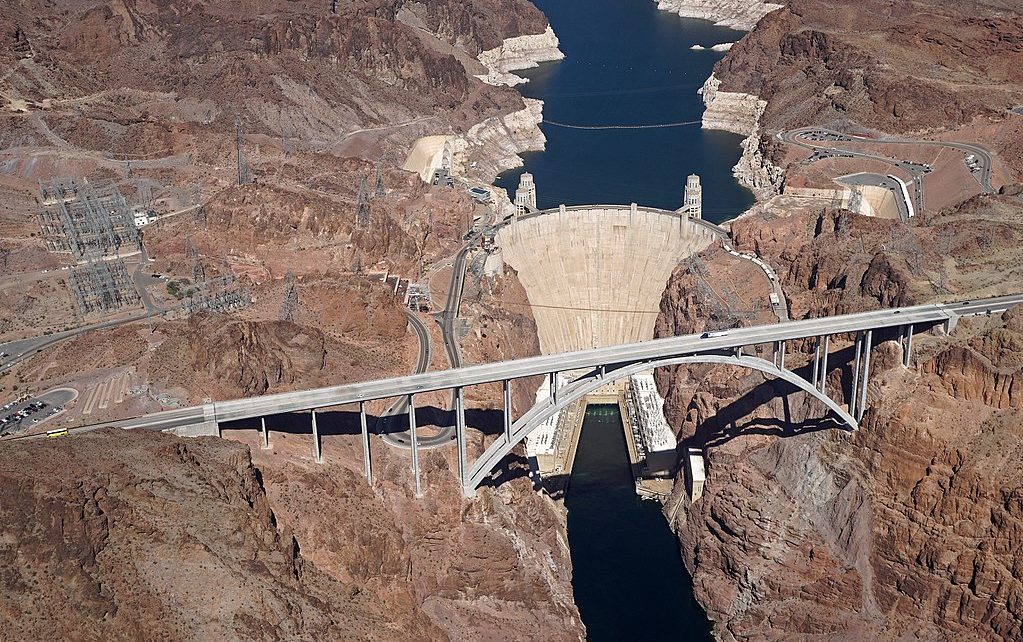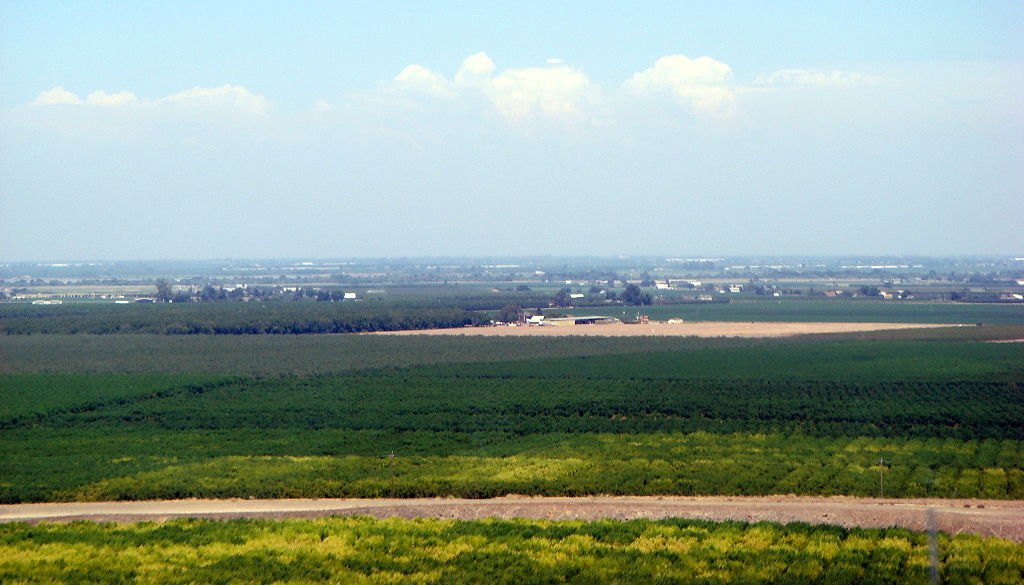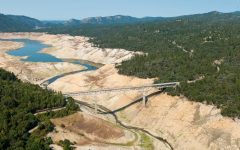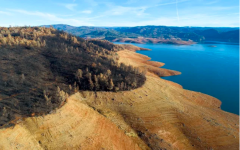
Mike O'Callaghan–Pat Tillman Memorial Bridge over the Colorado River at Hoover Dam. (Photo: Wikipedia)
California, Arizona, Nevada Agree To Voluntarilly Reduce Water Usage From Colorado River
California also to contribute $20 million to $200 million water efficiency project fund
By Evan Symon, December 16, 2021 11:50 am
Representatives from Arizona, California, and Nevada agreed to significantly reduce the amount of water that they will be taking from the Colorado River for the next two years on Wednesday at the annual Colorado River Water Users Association meeting on Wednesday in Las Vegas.
The volunteer agreement occurred as water levels in the river have gone down significantly in recent years. According to the U.S. Geological Survey (USGS), the flow of the Colorado River has gone down by 20% during the last century. However, increased water usage, as well as the accelerated loss of snowpack water sources for the river, have greatly accelerated the loss since the year 2000. While it threatens the water supply for both agricultural and urban uses, the more pressing concern is to keep power generation continuing at the Glen Canyon Dam in Arizona and the Hoover Dam on the Arizona-Nevada border.
The Bureau of Reclamation noted in September that Lake Powell, which forms behind the Glen Canyon Dam, has an 88% chance next year to drop below the 3,525 feet level needed for complete power generation, likely reducing generated power in the coming years. Similarly, Lake Mead, the Hoover Dam reservoir, has already seen power generation fall to 75% this year, with the water level currently sitting at 1,065 feet. If it falls to 950 feet, which there is currently a chance it might do, power could no longer be generated. As California receives half of the total power generated by the dam, the state not only faces a loss of power, but a loss of green power needed to meet state carbon-free goals by 2045.
The 500+ Plan
With electric power on the line, the three lower basin states of the river agreed to the 500+ Plan on Wednesday. According to the agreement, the states will cut 500,000 acre feet of water usage in 2022 and 2023. A $200 million dollar fund would also be created to introduce water efficiency projects in the three states. The federal government would contribute half the needed funds with $100 million, with Arizona giving $40 million, and California, Nevada, that the Central Arizona Project canal system giving $20 million each.
While Arizona will shoulder the largest burden financially, how much water each state will be giving up of the 500,000 acre feet of water is still being decided. Arizona water leaders in particular have said that their state cannot shoulder the burden alone, even though the Colorado River travels through the state the most in the lower basin states and both dams are located there.
“The reservoir is so low now that everyone realizes that they are vulnerable,” said Central Arizona Project General Manager Ted Cooke on Wednesday. “There won’t be time for a do-over if Arizona takes all the reductions. It’ll be too late.”
For Californian water leaders, the decision came down to volunteering to make cuts now and being able to move the amount back up when water levels improve or take mandatory federal cuts in a few years if water levels continue to go down.
“The agreement made in Vegas makes total sense,” water engineer Shane Alexander, who has worked on numerous water projects in California and in other drought-affected Western states, told the Globe Thursday. “Look at how the State Water Project here just decided to set allocations to o% next year. As soon as the federal or state government sets water usage, it can be difficult to change things quickly. But the Colorado River agreement is voluntary, so they’re making cuts now to both keep drastic federal cuts away, keep electricity being generated, and trying to install solutions now rather than later.”
“We find ways to use less water now, and we can get back to normal water usage quicker when things improve. We need drinking water and agricultural water of course, but we also need electricity. That’s what this agreement was all about.”
More state and federal water cuts are expected next year as water levels are projected to go dow even more at several fresh water sources across the West.
- Bill to Require Law Enforcement Disclosure if AI Was Used To Help Write Reports - August 7, 2025
- Gov. Newsom Files FOIA Request To ‘Expose True Cost’ Of L.A. Federal Troop Deployment for Anti-ICE Riots - August 6, 2025
- California Redistricting: How Newsom’s Plan Will Demolish Hard Fought GOP Gains - August 6, 2025





“Fill Mead First” is a popular cause in those parts, and for good reason, too. Nice to see some common sense for once.
https://qcnr.usu.edu/coloradoriver/files/FillMeadFirst_Exec_Summary.pdf
A little closer to home, I am wondering if the Santa Clara county seismic repair project and upgrade includes expanding the capacity of the Anderson reservoir. This would be the best time to be doing a capacity enhancement, I would think. Perhaps some of the “climate change” and environmentalist organizations would like to contribute $$$ or land resources to this project:
https://www.bizjournals.com/sanjose/news/2021/07/07/anderson-dam-reservoir-project-construction.html
But keep emptying the CA reservoirs to save the non-existent smelt fish….
No mention of the IID position